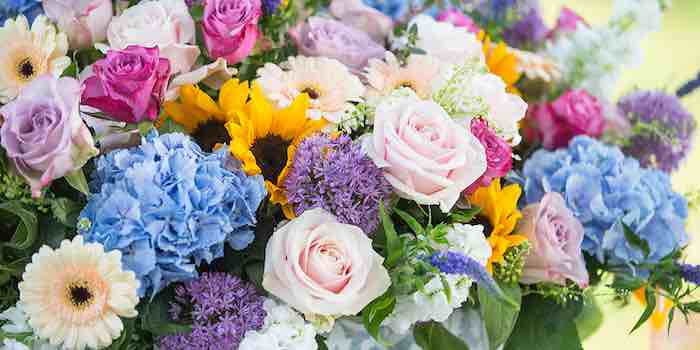By Wes Porter ——Bio and Archives--September 22, 2019
Lifestyles | CFP Comments | Reader Friendly | Subscribe | Email Us

“You were practically sure of landing your article on ‘The Language of Flowers’” suggested P. G. Wodehouse in Over Seventy (1956). In fact, the ‘Language of Flowers,’ or Floriography, to be more formal is far, far older than Wodehouse implies.
Sending a message through flower arrangements might sound like something dreamt up by advertisers for the Interflora company. But it finds mention in both the Bible in the Song of Songs and Shakespeare’s plays which contain over 50 references. In fact, the using or arranging flowers to communicate a message, floriography if you like, has long been practiced in cultures of Europe, Asia and Africa.
Today the Language of Flowers is most often associated in its most ornate with the so-called Victorian England of 1820-1880. It undoubtedly arrived there at least a century earlier, allowing young ladies of the emerging middle class to express feelings otherwise repressed. It reached the United States a decade after the opening of the Victorian era but had a shorter run there, until perhaps mid-century. At this time the Language of Flowers was at its most florid.
There exist a plethora of floral dictionaries with multiple meanings for many, many flowers. These have not been unknown to have been repeated in modern representations. As Wodehouse observed from the mid-1950s, it remains a popular subject amongst a certain segment of society and their publications. With so many floral combinations offered it is all too easy to send mixed messages.
Far to the East is to be found the Japanese language of flowers: Hanakotoba. Under this, some representations must be relatively modern. Cactus, said indicate lust and sex, cannot have reached Japan from the New World much before the 16th century. Shy Amaryllis fits the same category as would bluebells (gratefulness) from Europe. Considerably longer cultivated in the archipelago civilization were the daffodil (respect), gardenia (secret love), tiger lily (wealth), peony and red poppy (both indicating bravery) and even violet (honesty).
Up until quite recent years, it was not unknown for popular entertainers such as film stars to claim a “favourite flower.” For Madonna it remains white roses. Bright and cheerful sunflowers were preferred by Michael Jackson. Audrey Hepburn flower of choice was lily-of-the valley as was Grace Kelly’s when she married Prince Rainier. Orchids are the chosen blooms of Angelia Jolie, Marilyn Monroe and Michelle Obama – the last even has an orchid named after her.
Traces of the practice are still to be found elsewhere today. Florists, always avid to proclaim fresh floral associations – we have Interflora to thank for Mother’s Day – have devised suggestions for “birth flowers” or, alternately, “flowers of the month.” Since the English and Americans seldom agree on much, their floriography tends to differ:
Support Canada Free Press

| Month | English | United States |
|---|---|---|
| January | Carnation | Carnation/Snowdrop |
| February | Violet/Iris | Primrose |
| March | Daffodil | Daffodil |
| April | Sweet Pea/Daisy | Sweet Pea |
| May | Lily-of-the-Valley | Hawthorn/Lily-of-the-Valley |
| June | Rose | Rose/Honeysuckle |
| July | Larkspur | Water Lily/Larkspur |
| August | Gladiolus | Poppy/Gladiolus |
| September | Aster/Myosotis | Morning Glory/Aster |
| October | Marigold | Calendula/Marigold |
| November | Chrysanthemum | Chrysanthemum/Peony |
| December | Poinsettia | Holly/Narcissus |
Is the Language of Flowers, if not dead, at least badly wilted? Perhaps not. Does an exotic girl place a hibiscus bloom behind her left or right ear as a signal she is available for courting? What do bridal flowers signify? Which celebration is holly associated with? And we haven’t even started to consider national flowers . . .
View Comments
Wes Porter is a horticultural consultant and writer based in Toronto. Wes has over 40 years of experience in both temperate and tropical horticulture from three continents.